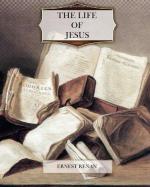[Footnote 1: Ruth i. 16.]
[Footnote 2: Esther ix. 27.]
[Footnote 3: Matt. xxiii. 15; Josephus, Vita, 23; B.J., II. xvii. 10, VII. iii. 3; Ant., XX. ii. 4; Horat., Sat. I., iv., 143; Juv., xiv. 96, and following; Tacitus, Ann., II. 85; Hist., V. 5; Dion Cassius, xxxvii. 17.]
[Footnote 4: Mishnah, Shebiit, X. 9; Talmud of Babylon, Niddah, fol. 13 b; Jebamoth, 47 b, Kiddushim, 70 b; Midrash, Jalkut Ruth, fol. 163 d.]
[Footnote 5: Apocryphal letter of Baruch, in Fabricius, Cod. pseud., V.T., ii., 147, and following.]
[Footnote 6: II. Book of Maccabees, ch. vii. and the De Maccabaeis, attributed to Josephus. Cf. Epistle to the Hebrews xi. 33, and following.]
[Footnote 7: III. Book (Apocr.) of Maccabees; Rufin, Suppl. ad Jos., Contra Apionem, ii. 5.]
The persecutions of Antiochus Epiphanes made this idea a passion, almost a frenzy. It was something very analogous to that which happened under Nero, two hundred and thirty years later. Rage and despair threw the believers into the world of visions and dreams. The first apocalypse, “The Book of Daniel,” appeared. It was like a revival of prophecy, but under a very different form from the ancient one, and with a much larger idea of the destinies of the world. The Book of Daniel gave, in a manner, the last expression to the Messianic hopes. The Messiah was no longer a king, after the manner of David and Solomon, a theocratic and Mosaic Cyrus; he was a “Son of man” appearing




